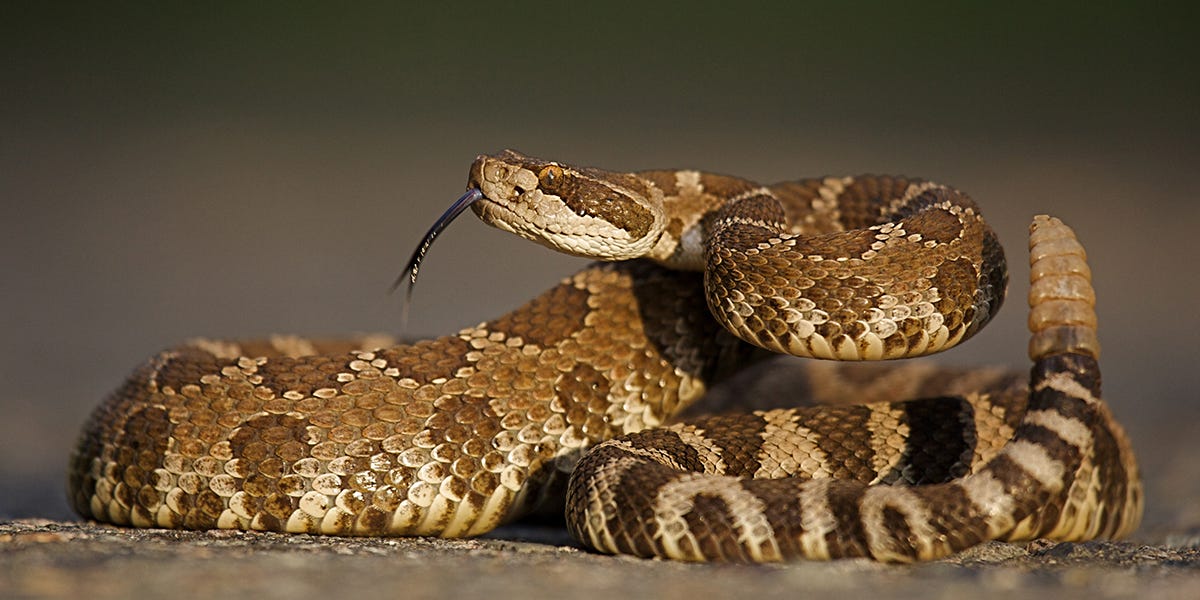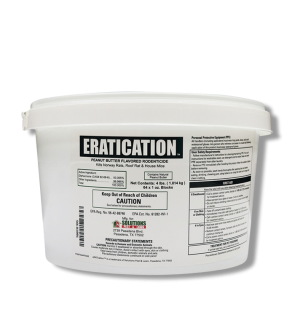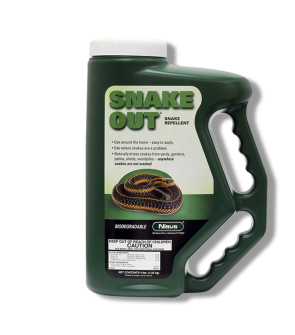Gain access to personalized product screening, the best pricing, rewards, and more!
Most Effective Products
How to Get Rid of a Rattlesnake
This page is an expert guide on getting rid of a rattlesnake from your yard using the products and methods suggested by our experienced pest control specialists. Follow this guide and use the recommended products to eliminate the threat of Rattlesnake activity around your yard.
Snakes finding themselves on your property is alarming, but encountering a rattlesnake can be frightening. Rattlesnakes are a dangerous snake species and quite an unfriendly intruder to run into. If one happens to come close to you to strike, not only can the rattlesnake bite be painful, but it can also be life-threatening.
In recent years, there has been an increase in rattlesnakes moving in toward buildings and structures due to seasonal conditions conducive to rattlesnakes moving to forage for meals. Normally, if a rattlesnake is discovered on your property, it is advised to contact animal control to handle it. However, there are things that you can do to protect your home against a Rattlesnake intrusion.
Follow our expert-made DIY guide below to learn more about rattlesnakes and the techniques and products you can use to keep them from threatening your home.
Identification

Before taking a treatment approach, you must be sure you are dealing with a rattlesnake and not some other animal. Misidentification can lead to using the wrong treatment methods, which may end up being a waste of your time and money. Below, we will cover what rattlesnakes look like so you can properly identify them:
- Rattlesnakes are reptiles found throughout North and South America and are a distinctive snake species.
- They have large, thick bodies ranging from one to eight feet long and unique features like their scaled skin, which comes in various colors and patterns. These scales look like a series of diamonds or hexagons overlapping one another. Most of the time, rattlesnakes are colored with subtle earth tones, which help to camouflage the snake.
- Rattlesnakes have a triangular head, a forked tongue, and fangs, which can inject venom.
- The most unique trait of the rattlesnake is how it got its name: the rattle at the end of their tail. Rattlesnake uses this rattle, which consists of interlocked segments or rings of keratin, to warn enemies.
Use the description and image above to identify a rattlesnake you have encountered properly. If you are unsure, contact us; we will help you identify the correct one.
Inspection

Once you have confirmed that you are dealing with a rattlesnake, you should next carry out an inspection. During this phase, you must locate the areas where the rattlesnakes are active and observe conditions that may attract them to your property. This will help you in determining where to focus your rattlesnake treatment.
Where to Inspect
When out in the wild, rattlesnakes can thrive in various environments, such as grasslands and rocky areas. When they are around buildings and structures, they likely will slither around areas with tall grass, gardens, or around the exterior walls of a building. and habitats, but they mostly prefer woody areas and tall grass for cover.
Rattlesnakes are likely present because they are looking for food. Unkempt grass with tall bushes and fallen leaves is the perfect habitat for rodents like mice, rats, and other insects. Since snakes feed on them, it is also the perfect place for them. Check areas of your yard with a lot of wood, mulch, and leaf litter.
What To Look For
Scan the exterior perimeter of your home and yard to find the rattlesnake. If more than one rattlesnake is present, your yard is likely appealing to them, with plenty of hiding spots and food sources, like rodents.
When you know a rattlesnake is present but aren't sure where another sign to watch for is any shed skin when they shed as part of their growth process.
Treatment
To keep rattlesnakes from visiting your yard during their travels, you must address the conducive conditions that attract them. This includes clearing up leaf litter, cutting back grass, and removing any food sources.
If you encounter a snake, we highly advise you not to try to kill it, as you may risk getting bitten. Keep a good distance away, 10 feet or more. Call for help from a trained professional to handle the snake appropriately.
If you know snakes are present, you can deter them from your yard with a snake repellent like Snake Out.
Step 1: Remove Food Sources (Rodent Control, etc.)
If you have found a rattlesnake in your yard and garden, then it is safe to assume that there is a food source nearby, which is exactly why the snake is so comfortable on your property. It is imperative that every homeowner first addresses any food source that the snake is living on. Snakes prey on small rodents, birds, insects, and lizards, so first, remove all these food sources to help you control rattlesnakes.
For rodent control, use Eratication, a powerful rodenticide bait shaped into blocks, along with The Solutions tamper-proof Rodent Bait Stations. Eratication is a multi-feed bait used to control rats and mice. To keep the bait safely out of the reach of children and pets and to keep it protected from the elements, we use tamper-proof bait stations. Our bait stations have a tamper-proof lid that requires a key, which is included with each station, to open.
When handling bait and stations, it is important to wear gloves. This will protect you from the bait and keep your scent off the stations, which will often deter rodents from the bait. Place three Eratication bait blocks into your station. Each bait block has a pre-drilled hole, allowing you to easily slide it onto the supplied metal rods in the bait station's interior.
Place your rodent bait stations along perimeter walls or fencerows. These are areas where rats and mice typically travel. Place each station about 10 to 15 feet apart to ensure thorough coverage of your area. Check the stations frequently to see if there is any rodent activity.
Step 2: Use Snake Repellent
Once you have removed all the sources of food near your home and garden, the next step is to invest in a snake repellant like Snake Out. Snake Out will not kill the snake but aggravate it with its special blend of natural ingredients, disturbing its sense of smell to the extent that the rattlesnake will relocate to a new destination.
First, determine the size of your yard by measuring and multiplying the length by the width. It's recommended to apply Snake Out 8 inches wide by 50 feet in length or 1 lb per 100 sq. ft. Once you calculate the square footage, lightly sprinkle a band 6 to 8 inches wide around, into, or next to the area you wish to protect. You can apply it to voids, holes, and cracks around your home and in your garage, sheds, and other areas where you suspect they may travel.
Step 3: Trap The Snake
If you are up for the task, you could trap the snake with the help of Solutions Humane Live Trap. With two hands, open the trap door by pushing on the door lock and lifting the door plate. Keep the door plate lifted while pulling the trigger arm forward to set it. Once you see the trigger arm's hook catch onto the door, the trap has been set.
Place your bait behind the trigger plate at the end of the trap. We suggest using a dead rodent as bait and place it into the trap. Monitor the trap after a few hours to see if the snake has been captured. If it has, you can alert animal control to relocate the rattlesnake safely.
Prevention
Once the threat of a rattlesnake is gone, you don't want to experience another intrusion. Preventative measures should be put into place to make the conditions of your property unappealing to wandering rattlesnakes.
- Snakes like to stay in cool and damp areas. Look for any drainage issues that you might have on your property and have them fixed. Do not leave any fallen leaves that are damp on the ground.
- Trim overgrown grass, trees, and shrubs and let sunlight enter. Warm and dry areas will send snakes away from your yard.
- Snakes are great at slithering their way from tiny spots. Inspect your house from the exterior and seal any gaps and holes that you might see with caulk. Make sure all cracks and gaps in windows and doors are sealed. PVC pipes and electrical wiring are another entry point for snakes; make sure to seal those shut.
- The use of Stuf-Fit Copper Mesh can help seal any possible points of entry, not just from snakes but also from other pests.
Key Takeaways
Why are Rattlesnakes a Problem?
- Rattlesnakes intruding into your yard can be very dangerous and a sign that you have rodent or conducive conditions that need to be modified.
How to Get Rid of Rattlesnakes
- Use a snake repellent such as Snake Out around your yard and perimeter to ward off rattlesnakes and deter them from the area. You could also try using a Solutions Human Live Trap with live or dead rodents as bait.
Preventing Rattlesnake Reinvasion
- Prevent future rattlesnake invasions by clearing up leaf litter, sealing off entry points, and fixing moisture issues.












